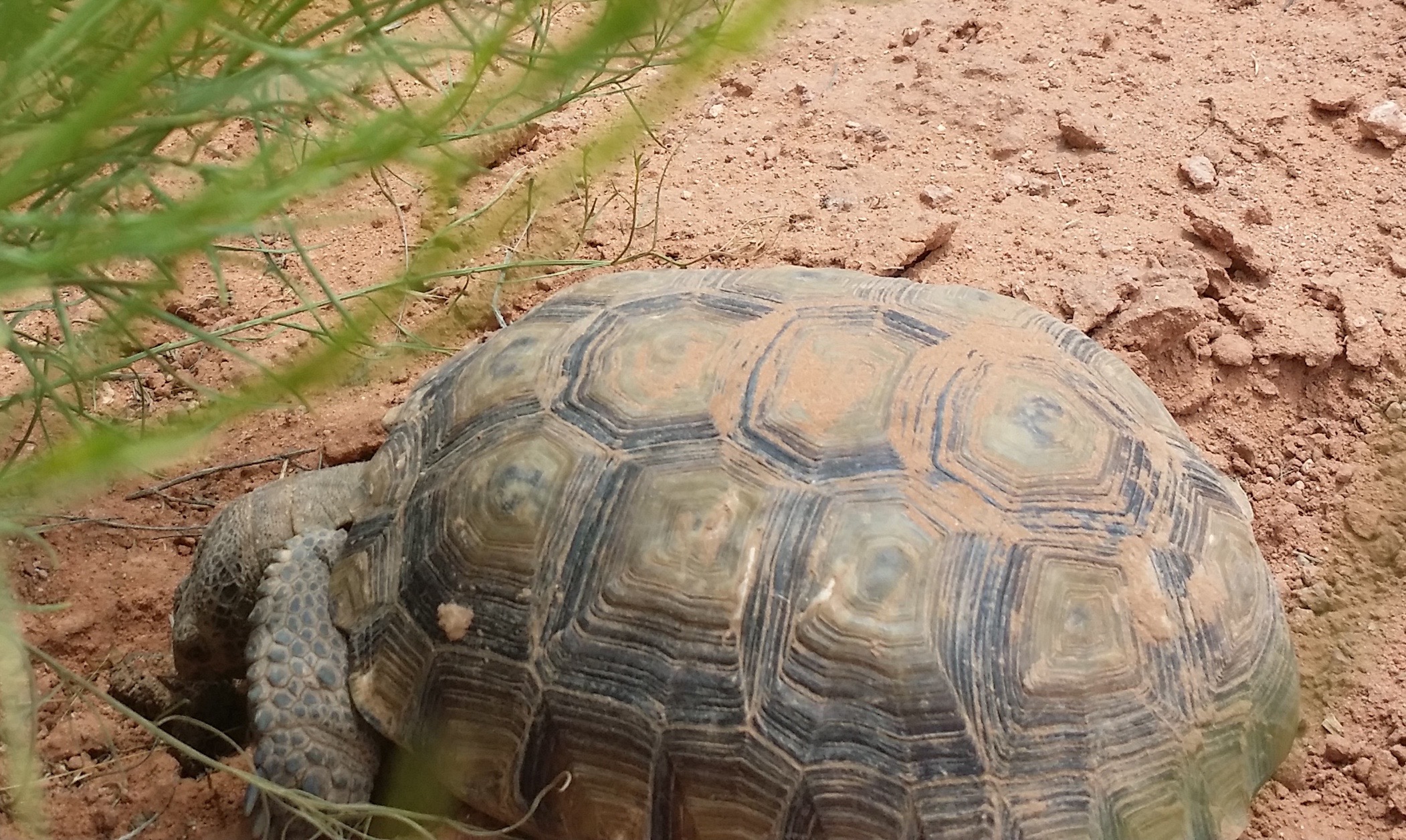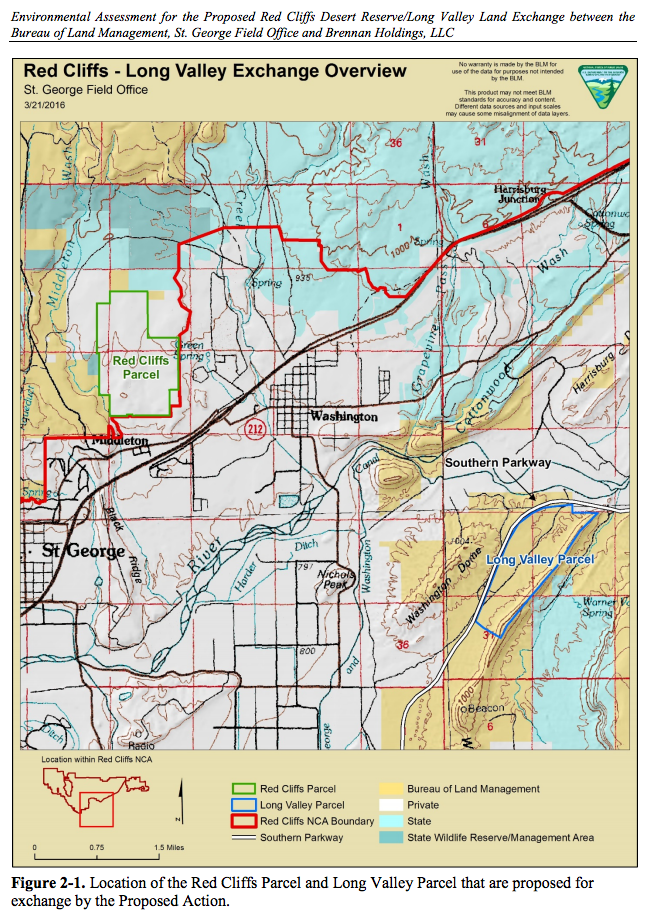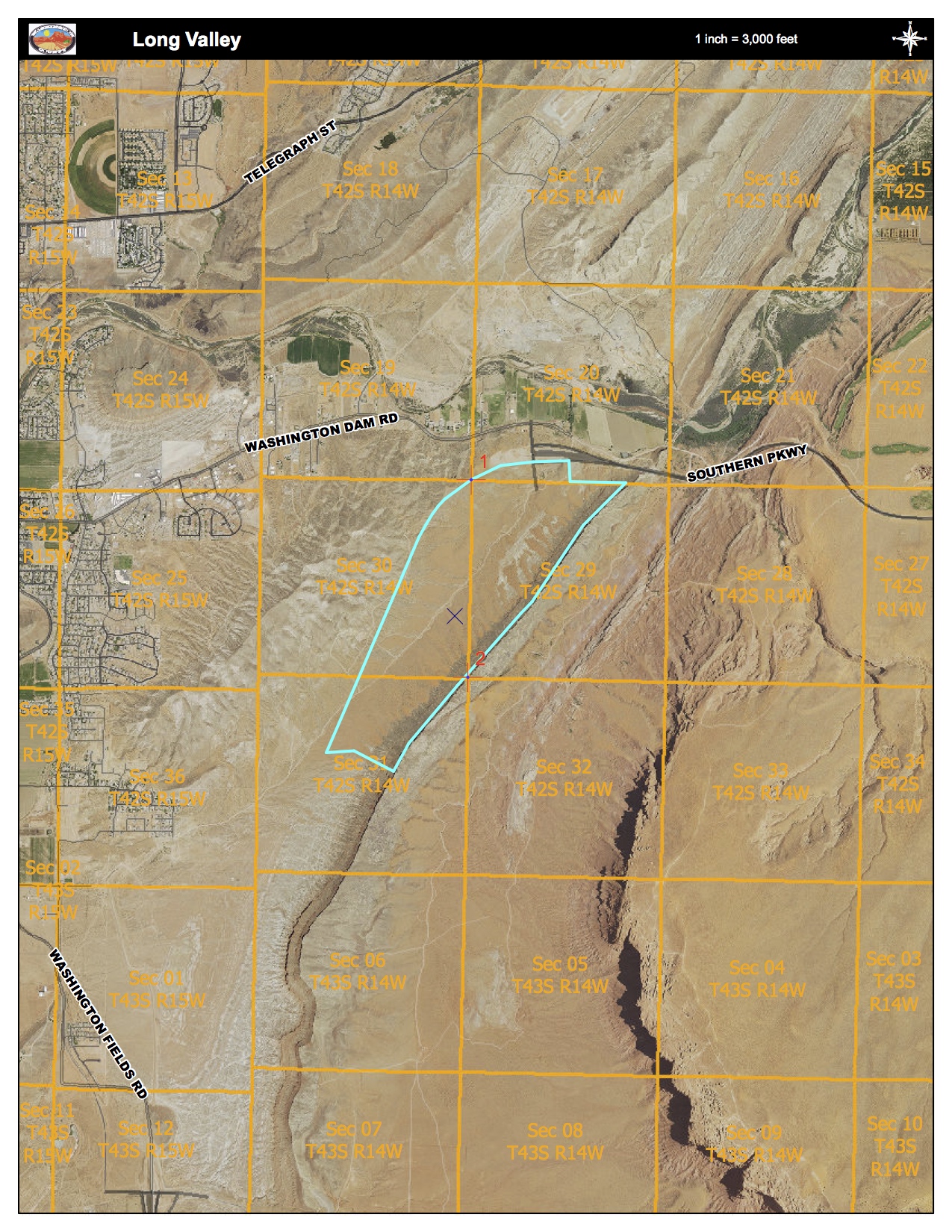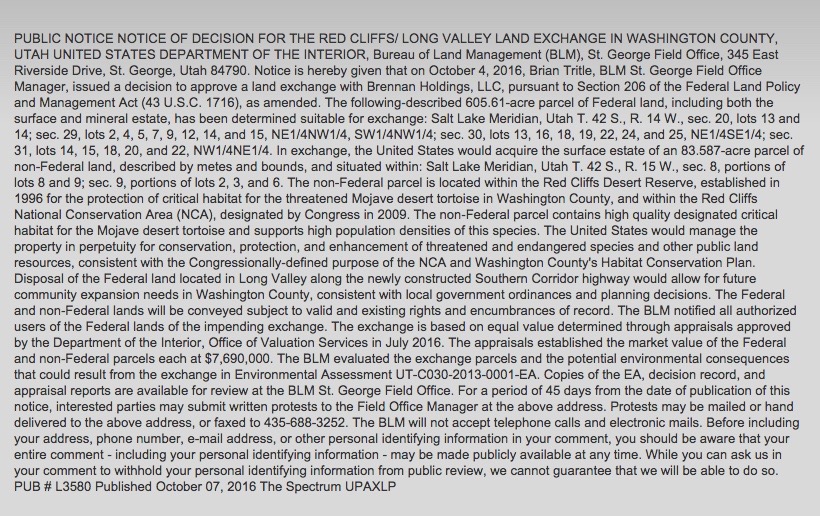
ST. GEORGE – An exchange of land in the Red Cliffs Desert Reserve for land in the Long Valley area of Washington County is moving forward; the owner of another chunk of land tied up by the reserve has been compensated for a portion of his property; and an unrelated property exchange the School and Institutional Trust Land Administration is pursuing could draw off some of SITLA’s inholdings in the reserve.

Background
The Red Cliffs Desert Reserve was created in 1996 to protect the endangered Mojave desert tortoise and other species while allowing development to continue in the rest of Washington County.
The Habitat Conservation Plan, the managing document for the reserve, set aside the 62,000-acre reserve thereby allowing continued development in otherwise tortoise habitat in the rest of the county.
Read more: Habitat Conservation Plan expires after 20 years of protecting tortoises; renewal efforts continue
A handful of private landowners still own 1,288 acres and SITLA still owns about 6,500 acres in the reserve. These remaining properties must either be purchased outright or traded for land of equal value, under the terms of the Habitat Conservation Plan.

Long Valley land swap
Developer Bob Brennan is the largest private landowner remaining, with about 800 acres.
The Bureau of Land Management announced Thursday that it will trade 80 of those acres for 605 acres in Long Valley.
When appraised for trade, land in the reserve must be given full market value – as if the desert tortoise and the Red Cliffs Reserve did not exist. According to the BLM’s published notice of decision, both properties in the proposed exchange have been valued at $7,690,000.
The Long Valley parcel is located in an unincorporated area of Washington County. It sits about 1.5 miles from the St. George Regional Airport, 6 miles east of St. George and just outside of Washington City between Washington Dome and Warner Ridge.
The property falls within the 40,000-acre Sand Mountain Special Recreation Management Area – an area Brennan has targeted in recent years as an acceptable exchange property. Brennan met with resistance from off-highway vehicle recreationists who oppose development that would cut into the area that thus far remains available to them for OHV use.
The Long Valley portion of Sand Mountain, according to the environmental assessment made for the proposed transaction, is not heavily used for motorized recreation due to its location and physical features.
As reported by St. George News in April, archaeological surveys have been completed on the Long Valley property. Of interest to Red Cliffs National Conservation manager Dawna Ferris-Rowley are historic and prehistoric sites, including 1930s-era soil erosion control features built by the Leeds Camp of the Civilian Conservation Corps.

“Stacks of rock in some cases or mounds of dirt used to kind of slow the water down as it was coming off the sides of the Hurricane Cliffs, the Warner Valley Ridge,” Ferris-Rowley said, “and to prevent it from creating erosion on those parcels as it heads towards the Virgin River and the Washington Canal.”
To accommodate both the archaeological concerns and Brennan’s acquisition of the Long Valley property in the exchange, the structures will be preserved digitally through a Historic American Landscape Survey. The survey uses historical research, photographs and drawings; the information will be sent to the Library of Congress.
Prehistoric sites will require processing by archaeologists using traditional methods to preserve information and artifacts.
The BLM published its notice of decision authorizing the Long Valley Exchange Oct. 7, which started a 45-day protest period. Notices are being mailed to interested stakeholders and those who commented on the environmental assessment for the proposed exchange. If no protests and subsequent appeals are filed, the titles will convey approximately 65 days following publication, BLM spokesman Christian Venhuizen said.

Doyle property in the reserve
The BLM also purchased 9 acres of private land in the reserve from Jim Doyle Oct. 3, Venhuizen said. The 9-acre parcel is considered high-quality tortoise habitat and was purchased for $690,000 with funds received from previous land sales in Washington County.
“The Omnibus Public Land Management Act of 2009 authorizes the BLM to sell parcels of land identified for disposal in the St. George Field Office RMP (resource management plan) and to use the funds to purchase private inholdings within the Red Cliffs NCA,” BLM St. George Field Office Manager Brian Tritle said.
Doyle acquired 2,440 acres in 1990 with the intention of developing a golf course community in the foothills of Pine Valley Mountain, an intention frustrated when the land was taken into the Red Cliffs Reserve.
In September 2013, Doyle and limited partnership Environmental Land Technologies Ltd. sued Washington County, Sally Jewell of the Interior Department, U.S. Fish and Wildlife Service and the BLM, contending among other things that they failed in their obligations to facilitate the promised purchase or exchange of his property.
Read more: Desert tortoise land dispute triggers lawsuit against county
Ultimately, the U.S. District Court dismissed the case against Washington County in December 2015. The dismissal was without prejudice, meaning Doyle could refile suit against the county at a later time.
Doyle’s suit continues against the federal defendants. In May 2015, the court granted a joint motion made by Doyle and the federal defendants giving the federal agencies until June 30 of this year to develop its comprehensive plan for the long-term management of the Red Cliffs National Conservation Area. That order was later extended to allow the agencies through the end of this year to complete the management plan.
Doyle still holds 266 acres in the reserve, Deputy Washington County Attorney Eric Clarke said.
SITLA property
Utah School and Institutional Trust Land Administration is the largest remaining landowner in the Red Cliffs Reserve, still holding about 6,500 acres, Clarke said.
The Utah Test and Training Range, a military site west of the Wasatch Front, is looking to expand. SITLA holds 85,000 acres within that test and training range area, and wants to exchange out of it, trading its 85,000 acres there for 95,000 acres elsewhere, Washington County Commissioner Victor Iverson said.
In SITLA’s proposed test and training range property exchange, SITLA will need to reconcile the values of the two properties by contributing an additional $10 million to $30 million in value into the exchange.
The way SITLA’s proposed exchange benefits the reserve is that SITLA may relinquish a portion of its inholdings in the reserve for credit towards its exchange up north.
“What SITLA can do then is come down into the (Red Cliffs) reserve and measure out $10 million to $30 million (worth of land) in reserve property,” Iverson said, which value would be credited towards its test and training range property exchange.
If the exchange goes through, county and Habitat Conservation Plan administrators could see “major movement” in resolving the remaining inholdings in the Reserve.
St. George News Editor-in-Chief Joyce Kuzmanic contributed to this report.
Email: [email protected]
Twitter: @STGnews
Copyright St. George News, SaintGeorgeUtah.com LLC, 2016, all rights reserved.
If I try to imagine what the Long Valley map should look like now that Highway 7 is fully functional through this area, it appears that the 605 acres will not impact the most important OHV recreation trails that UPLA was concerned about. Most of the recreation occurs well east of this parcel, overlooking Highway 7 and the Sand Hollow Reservoir, with some OHV activity in the next valley.
It will be interesting to see what additional parcels are earmarked to swap, to secure Brennan’s remaining 720 acres…….
No victory yet……..